Abstract
Factors contributing to protection against experimental tuberculosis have been studied with refined and well characterized fractions from mycobacteria and with certain unrelated antigens. Mice were vaccinated intravenously with various combinations of materials presented on minute oil droplets in saline emulsions and were later challenged by aerosol. The minimal composition of an effective vaccine was P3 (a trehalose mycolate similar to cord factor) plus an antigen, which could be tuberculoprotein, or a low-molecular-weight tuberculin-active peptide, or unrelated antigen such as bovine serum albumin or bacterial endotoxin. Development of a hypersensitivity granuloma in the lungs appeared to be essential to protection in this laboratory model.
Full text
PDF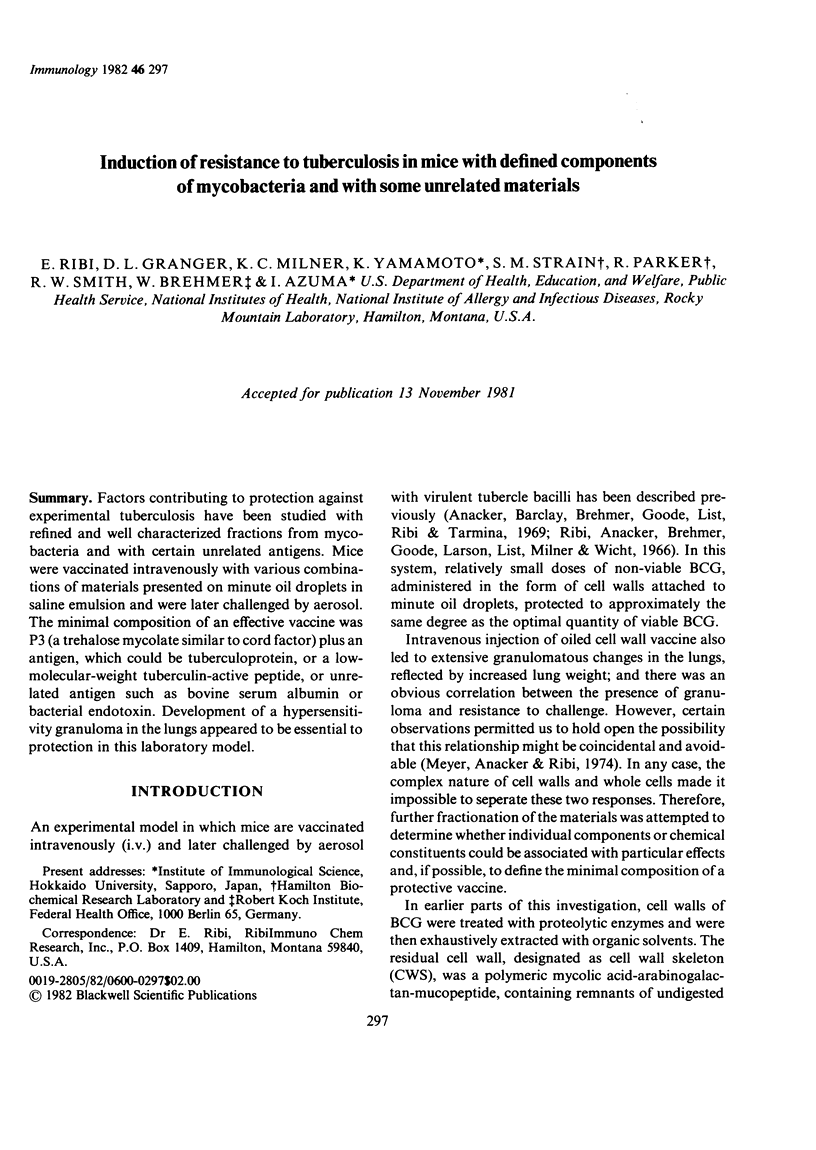
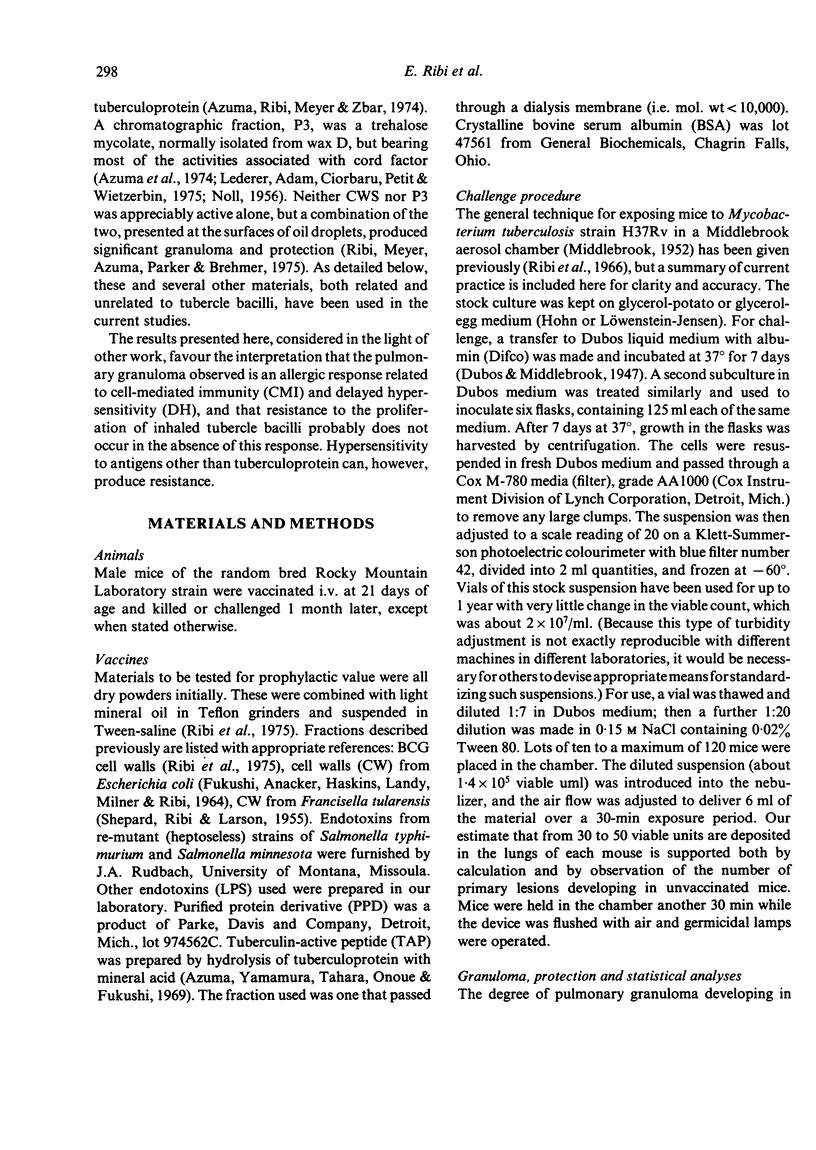
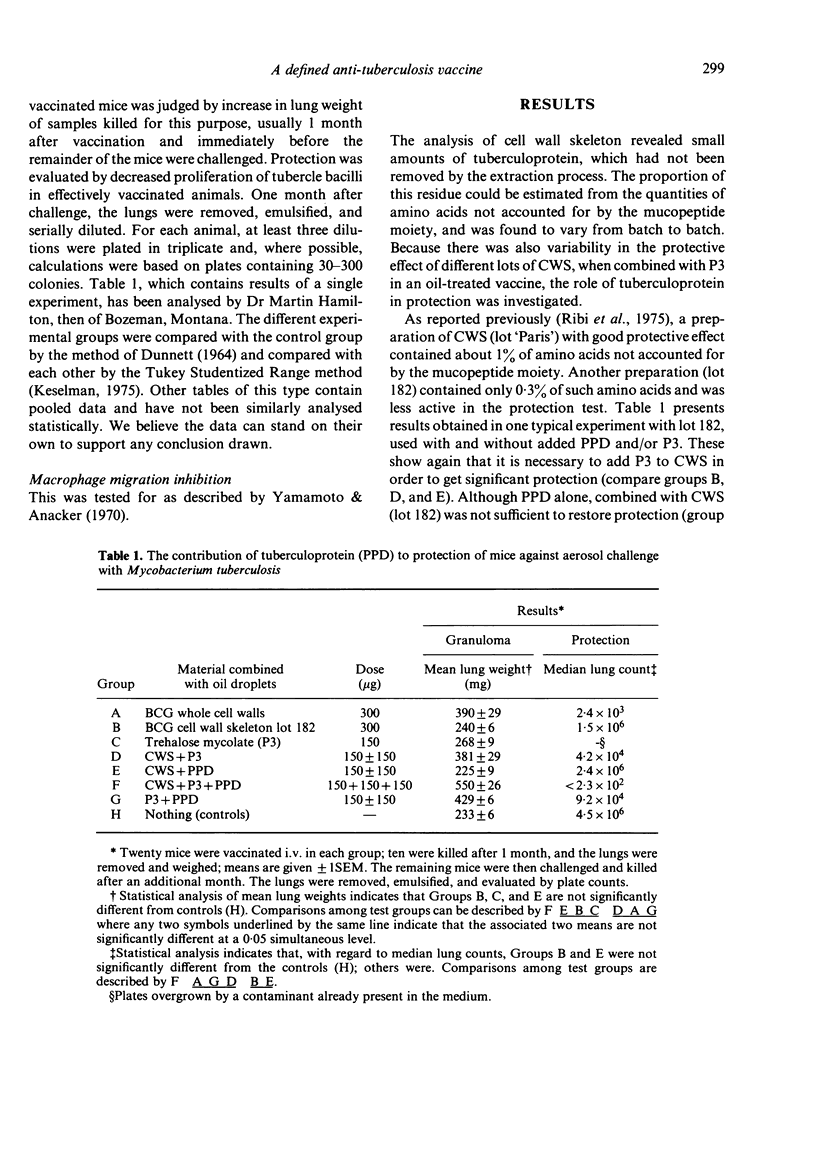
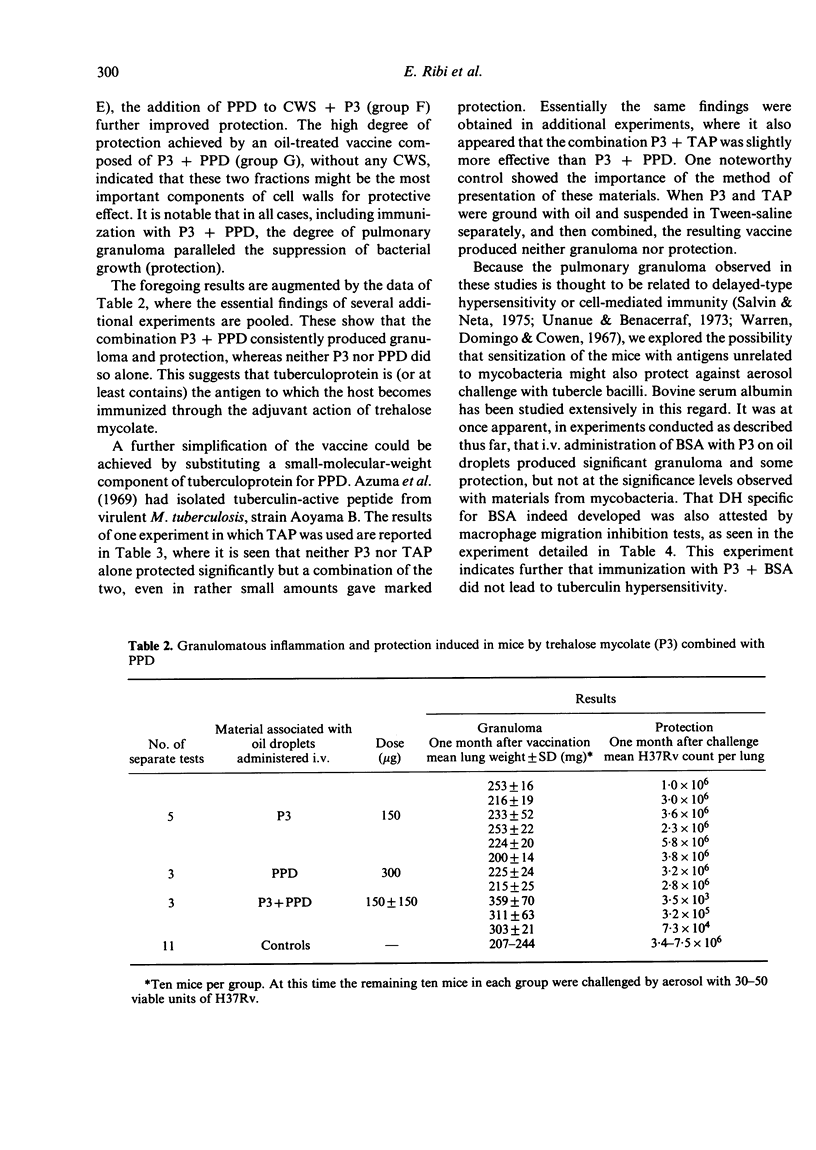
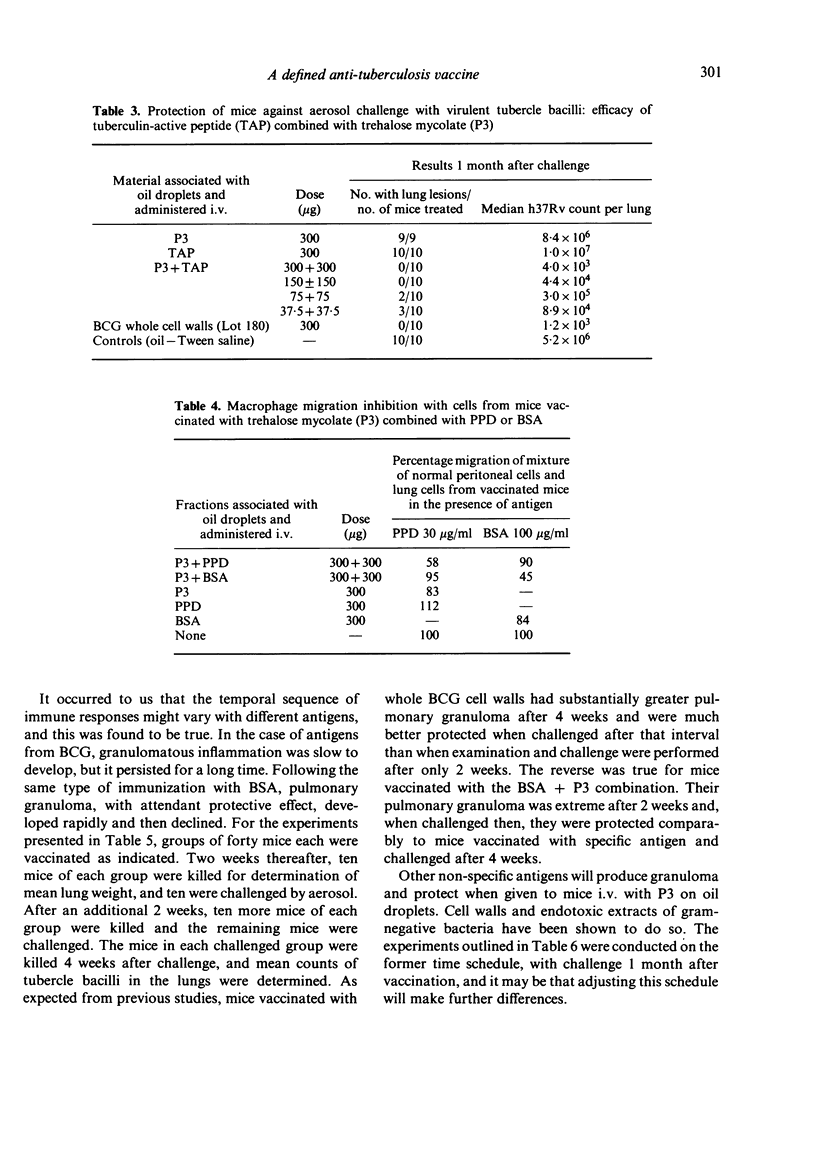
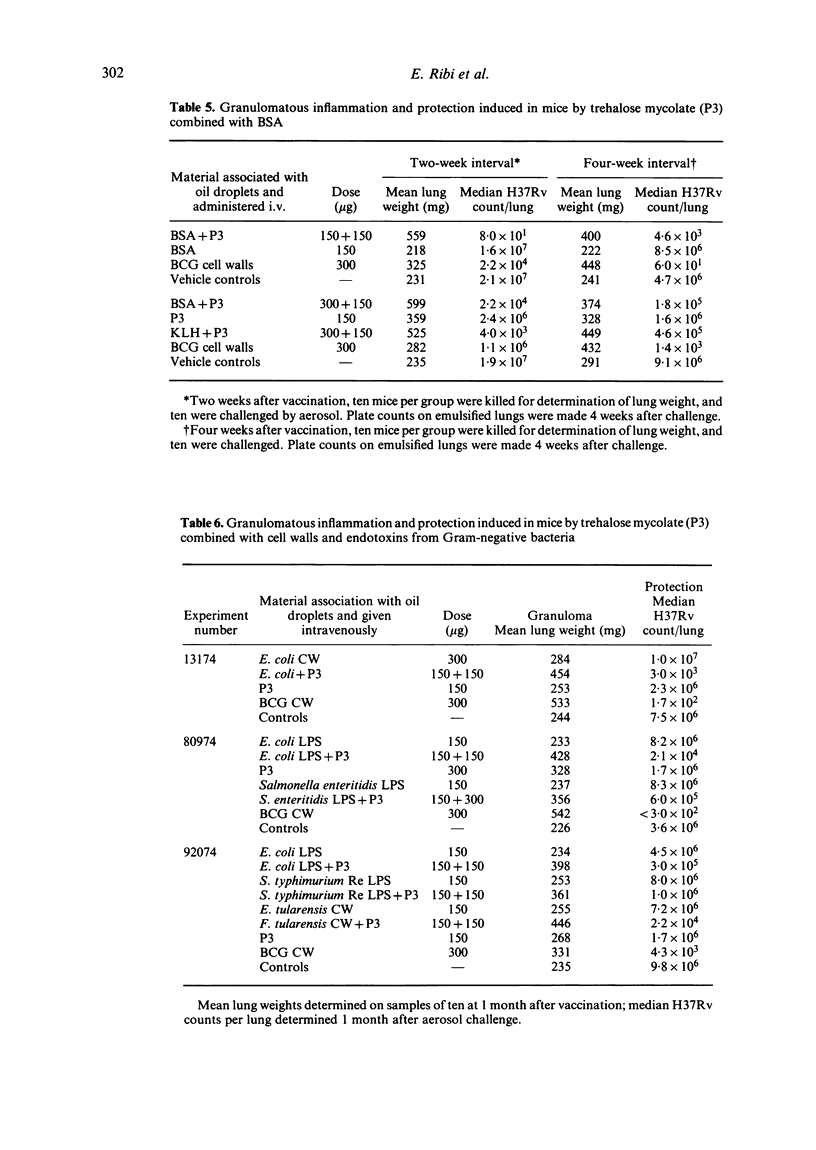
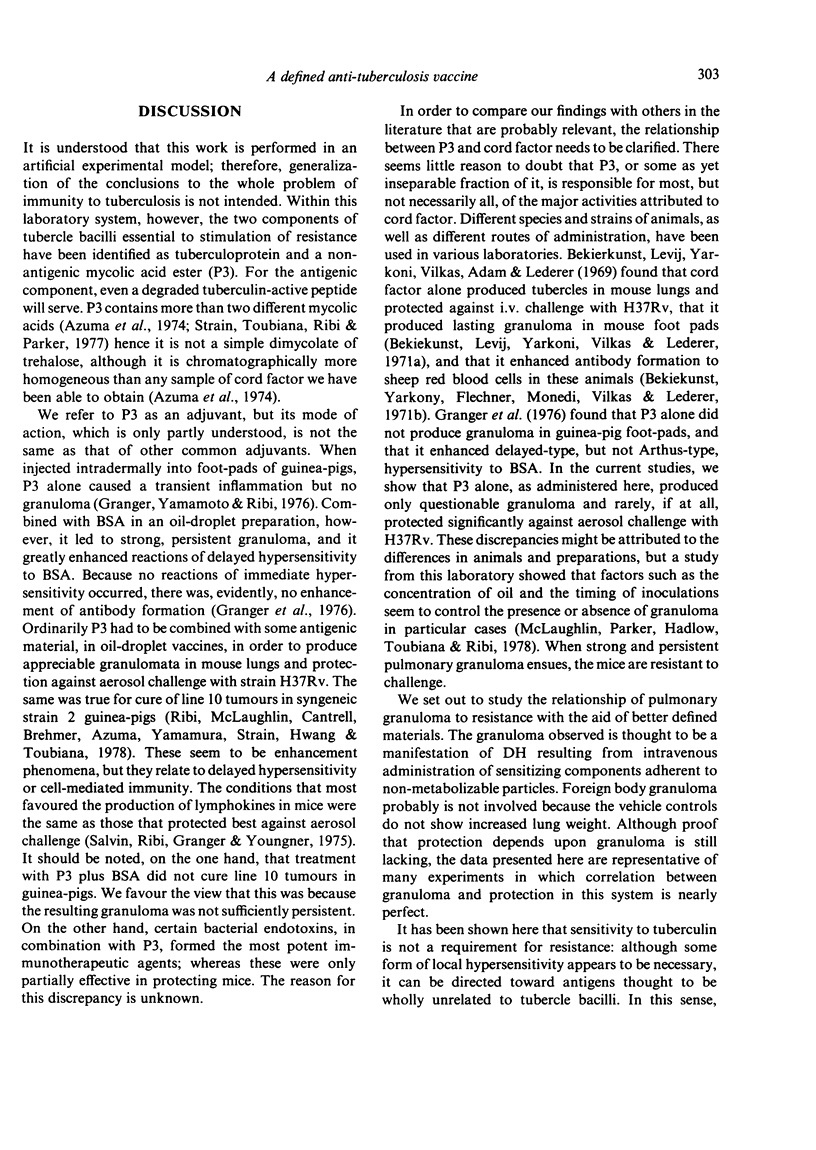
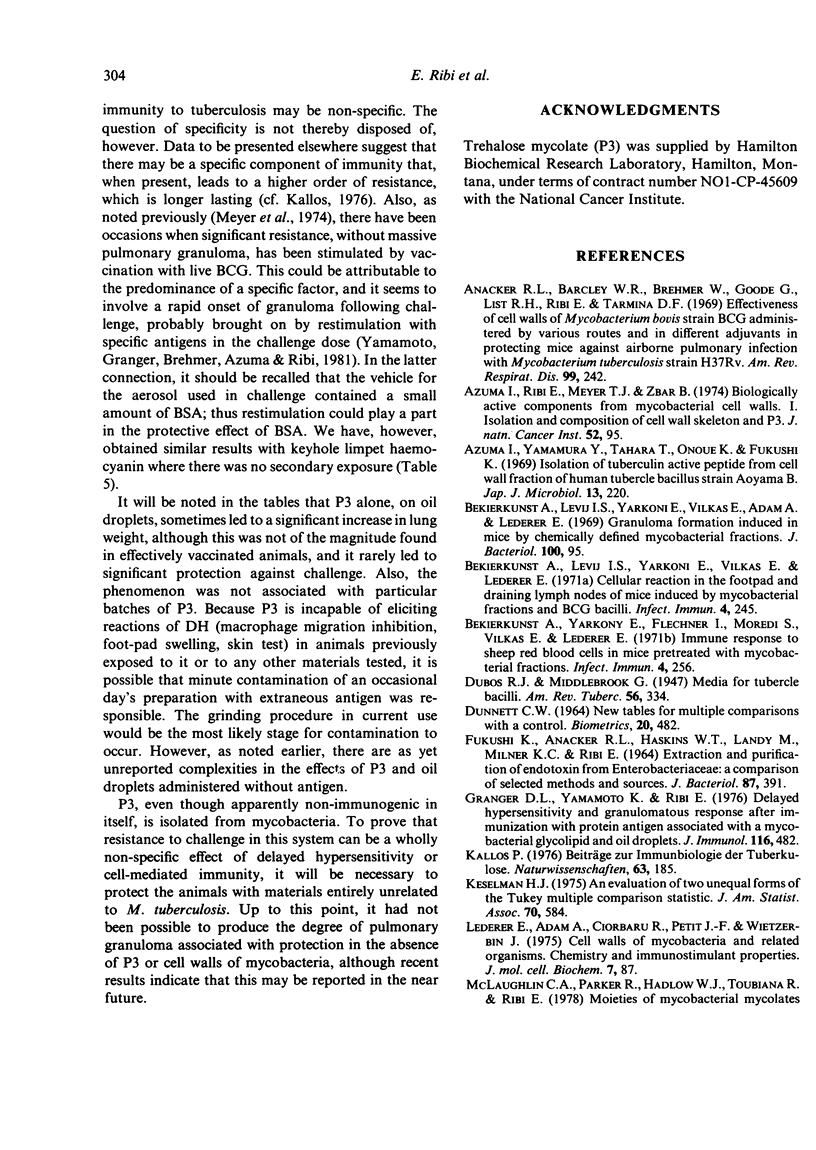
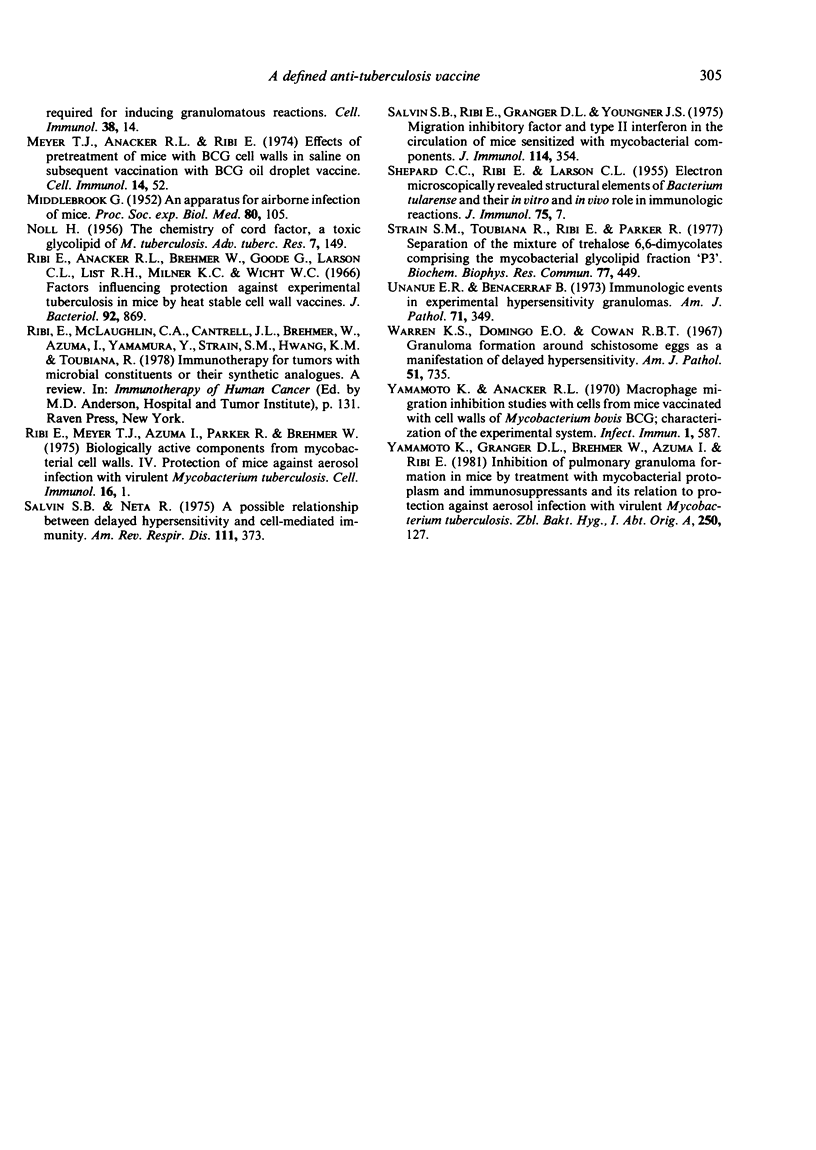
Selected References
These references are in PubMed. This may not be the complete list of references from this article.
- Anacker R. L., Barclay W. R., Brehmer W., Goode G., List R. H., Ribi E., Tarmina D. F. Effectiveness of cell walls of Mycobacterium bovis strain BCG administered by various routes and in different adjuvants in protecting mice against airborne infection with Mycobacterium tuberculosis strain H37Rv. Am Rev Respir Dis. 1969 Feb;99(2):242–248. doi: 10.1164/arrd.1969.99.2.242. [DOI] [PubMed] [Google Scholar]
- Azuma I., Ribi E. E., Meyer T. J., Zbar B. Biologically active components from mycobacterial cell walls. I. Isolation and composition of cell wall skeleton and component P3. J Natl Cancer Inst. 1974 Jan;52(1):95–101. doi: 10.1093/jnci/52.1.95. [DOI] [PubMed] [Google Scholar]
- Azuma I., Yamamura Y., Tahara T., Onoue K., Fukushi K. Isolation of tuberculin active peptides from cell wall fraction of human tubercle bacillus strain Aoyama B. Jpn J Microbiol. 1969 Jun;13(2):220–222. doi: 10.1111/j.1348-0421.1969.tb00459.x. [DOI] [PubMed] [Google Scholar]
- Bekierkunst A., Levij I. S., Yarkoni E., Vilkas E., Adam A., Lederer E. Granuloma formation induced in mice by chemically defined mycobacterial fractions. J Bacteriol. 1969 Oct;100(1):95–102. doi: 10.1128/jb.100.1.95-102.1969. [DOI] [PMC free article] [PubMed] [Google Scholar]
- Bekierkunst A., Levij I. S., Yarkoni E., Vilkas E., Lederer E. Cellular reaction in the footpad and draining lymph nodes of mice induced by mycobacterial fractions and BCG bacilli. Infect Immun. 1971 Sep;4(3):245–255. doi: 10.1128/iai.4.3.245-255.1971. [DOI] [PMC free article] [PubMed] [Google Scholar]
- Bekierkunst A., Yarkoni E., Flechner I., Morecki S., Vilkas E., Lederer E. Immune response to sheep red blood cells in mice pretreated with mycobacterial fractions. Infect Immun. 1971 Sep;4(3):256–263. doi: 10.1128/iai.4.3.256-263.1971. [DOI] [PMC free article] [PubMed] [Google Scholar]
- FUKUSHI K., ANACKER R. L., HASKINS W. T., LANDY M., MILNER K. C., RIBI E. EXTRACTION AND PURIFICATION OF ENDOTOXIN FROM ENTEROBACTERIACEAE: A COMPARISON OF SELECTED METHODS AND SOURCES. J Bacteriol. 1964 Feb;87:391–400. doi: 10.1128/jb.87.2.391-400.1964. [DOI] [PMC free article] [PubMed] [Google Scholar]
- Granger D. L., Yamamoto K. I., Ribi E. Delayed hypersensitivity and granulomatous response after immunization with protein antigens associated with a mycobacterial glycolipid and oil droplets. J Immunol. 1976 Feb;116(2):482–488. [PubMed] [Google Scholar]
- Kallós P. Beiträge zur Immunbiologie der Tuberukulose. Naturwissenschaften. 1976 Apr;63(4):185–189. doi: 10.1007/BF00624217. [DOI] [PubMed] [Google Scholar]
- MIDDLEBROOK G. An apparatus for airborne infection of mice. Proc Soc Exp Biol Med. 1952 May;80(1):105–110. doi: 10.3181/00379727-80-19538. [DOI] [PubMed] [Google Scholar]
- McLaughlin C. A., Parker R., Hadlow W. J., Toubiana R., Ribi E. Moieties of mycobacterial mycolates required for inducing granulomatous reactions. Cell Immunol. 1978 Jun;38(1):14–24. doi: 10.1016/0008-8749(78)90027-8. [DOI] [PubMed] [Google Scholar]
- Meyer T. J., Anacker R. L., Ribi E. Effects of pretreatment of mice with BCG cell walls in saline on subsequent vaccination with BCG oil droplet vaccine. Cell Immunol. 1974 Oct;14(1):52–65. doi: 10.1016/0008-8749(74)90169-5. [DOI] [PubMed] [Google Scholar]
- NOLL H. The chemistry of cord factor, a toxic glycolipid of M. tuberculosis. Bibl Tuberc. 1956;(10):149–183. [PubMed] [Google Scholar]
- Ribi E., Anacker R. L., Brehmer W., Goode G., Larson C. L., List R. H., Milner K. C., Wicht W. C. Factors influencing protection against experimental tuberculosis in mice by heat-stable cell wall vaccines. J Bacteriol. 1966 Oct;92(4):869–879. doi: 10.1128/jb.92.4.869-879.1966. [DOI] [PMC free article] [PubMed] [Google Scholar]
- Ribi E., Meyer T. J., Azuma I., Parker R., Brehmer W. Biologically active components from mycobacterial cell walls. IV. Protection of mice against aerosol infection with virulent mycobacterium tuberculosis. Cell Immunol. 1975 Mar;16(1):1–10. doi: 10.1016/0008-8749(75)90180-x. [DOI] [PubMed] [Google Scholar]
- SHEPARD C. C., RIBI E., LARSON C. Electron microscopically revealed structural elements of Bacterium tularense and their in vitro and in vivo role in immunologic reactions. J Immunol. 1955 Jul;75(1):7–14. [PubMed] [Google Scholar]
- Salvin S. B., Neta R. A possible relationship between delayed hypersensitivity and cell-mediated immunity. Am Rev Respir Dis. 1975 Apr;111(4):373–377. doi: 10.1164/arrd.1975.111.4.373. [DOI] [PubMed] [Google Scholar]
- Salvin S. B., Ribi E., Granger D. L., Youngner J. S. Migration inhibitory factor and type II interferon in the circulation of mice sensitized with mycobacterial components. J Immunol. 1975 Jan;114(1 Pt 2):354–359. [PubMed] [Google Scholar]
- Strain S. M., Toubiana R., Ribi E., Parker R. Separation of the mixture of trehalose 6,6'-dimycolates comprising the mycobacterial glycolipid fraction, "P3". Biochem Biophys Res Commun. 1977 Jul 25;77(2):449–456. doi: 10.1016/s0006-291x(77)80001-6. [DOI] [PubMed] [Google Scholar]
- Unanue E. R., Benacerraf B. Immunologic events in experimental hypersensitivity granulomas. Am J Pathol. 1973 Jun;71(3):349–364. [PMC free article] [PubMed] [Google Scholar]
- Warren K. S., Domingo E. O., Cowan R. B. Granuloma formation around schistosome eggs as a manifestation of delayed hypersensitivity. Am J Pathol. 1967 Nov;51(5):735–756. [PMC free article] [PubMed] [Google Scholar]
- Yamamoto K., Anacker R. L. Macrophage Migration Inhibition Studies with Cells from Mice Vaccinated with Cell Walls of Mycobacterium bovis BCG: Characterization of the Experimental System. Infect Immun. 1970 Jun;1(6):587–594. doi: 10.1128/iai.1.6.587-594.1970. [DOI] [PMC free article] [PubMed] [Google Scholar]
- Yamamoto K., Granger D. L., Brehmer W., Azuma I., Ribi E. Inhibition of pulmonary granuloma formation in mice by treatment with Mycobacterial protoplasm and immuno-suppressants and its relation to protection against aerosol infection with virulent Mycobacterium tuberculosis. Zentralbl Bakteriol Mikrobiol Hyg A. 1981;250(1-2):127–141. [PubMed] [Google Scholar]


